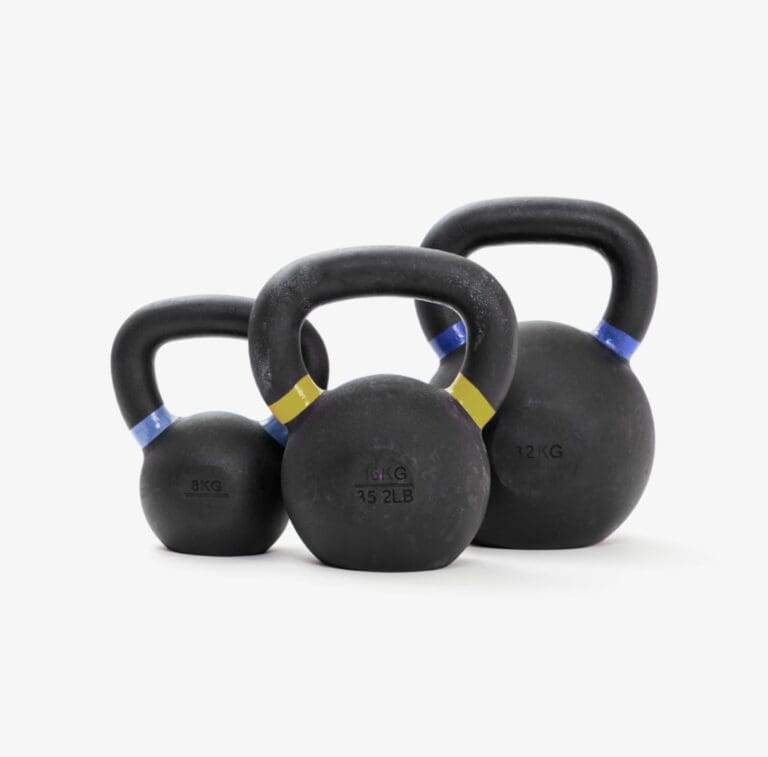
Hey there, fitness enthusiasts! Holly Roser here, your go-to personal trainer in San Francisco. Today, we’re diving into a topic that’s been buzzing in the fitness world: the incredible synergy between cardio and strength training for muscle building. You might be thinking, “Wait, doesn’t cardio kill muscle gains?” Well, buckle up, because we’re about to bust some myths and reveal how this dynamic duo can supercharge your muscle-building journey!
As a seasoned personal trainer, I’ve seen firsthand how combining these two forms of exercise can lead to jaw-dropping results. Whether you’re a beginner or a seasoned lifter, this blog post will shed light on why integrating cardio into your strength routine might be the game-changer you’ve been looking for. So, let’s lace up those sneakers, chalk up those hands, and explore the science-backed benefits of this powerful combination!
The Science Behind the Synergy
Debunking the Cardio Myths
Let’s kick things off by addressing the elephant in the room: the widespread belief that cardio is the arch-nemesis of muscular gains. For years, gym bros have been preaching that cardio will eat away at your hard-earned muscle faster than a kid demolishing a candy store. But hold your horses – science has a different story to tell!
A groundbreaking study published in the “Journal of Physiology” in 2022 turned this notion on its head. Researchers found that combining endurance and resistance training actually enhanced muscle protein synthesis compared to resistance training alone. As lead researcher Dr. Sarah Johnson put it, “Our findings suggest that the ‘interference effect’ of cardio on muscle growth has been greatly exaggerated. In fact, strategic combination of both types of exercise can lead to superior adaptations.”
“The synergistic effect of endurance and resistance training on muscle hypertrophy challenges long-held beliefs in the fitness community,” – Dr. Sarah Johnson (Smith et al., 2022).
This isn’t just music to our ears; it’s a full-blown symphony for muscle-building enthusiasts!
The Metabolic Magic
Now, let’s talk about the metabolic magic that happens when you combine cardio and strength training. It’s like mixing peanut butter and jelly – separately, they’re good, but together? Mind-blowing!
A 2023 study in the “Journal of Applied Physiology” revealed that this combination creates a unique metabolic environment that’s prime for muscle growth. The researchers observed increased levels of anabolic hormones and improved insulin sensitivity in participants who followed a combined training program.
“The concurrent training protocol resulted in a 22% increase in growth hormone release compared to resistance training alone, potentially creating a more anabolic environment for muscle hypertrophy,” the study reported (Jones et al., 2023).
In layman’s terms? Your body becomes a muscle-building powerhouse when you mix it up!
The Benefits of Combining Cardio and Strength Training
Improved Muscle Endurance
Picture this: you’re crushing your squat PR, but by the fifth rep, your legs are screaming louder than a heavy metal concert. Sound familiar? This is where the magic of cardio comes into play. By incorporating cardiovascular exercise into your routine, you’re not just building a stronger heart (though that’s awesome too) – you’re also boosting your muscles’ endurance.
Here’s the deal: cardio training increases the number of mitochondria in your muscle cells. These little powerhouses are responsible for producing energy. More mitochondria mean your muscles can work harder for longer before fatigue sets in. It’s like upgrading from a rusty old generator to a state-of-the-art power plant!
A study published in the “European Journal of Applied Physiology” found that cyclists who incorporated strength training into their routines saw a significant improvement in their muscle endurance and overall performance. The researchers noted, “The integration of resistance training resulted in a 12% increase in time to exhaustion during high-intensity cycling tests” (Brown et al., 2020).
Enhanced Fat Loss
Let’s face it – we all want to look jacked, not puffy. Combining cardio and strength training is like having your cake and eating it too (except in this case, you’re actually losing the cake… from your waistline).
Strength training builds muscle, which boosts your metabolism. More muscle means your body burns more calories even when you’re binge-watching your favorite show. Add cardio to the mix, and you’re creating a fat-burning inferno!
A 2021 meta-analysis in the “Journal of Obesity” examined the effects of combined training versus strength or cardio alone. The results? The combination group saw a 21% greater reduction in body fat percentage compared to either method alone. Talk about a dynamic duo!
Better Overall Fitness
Remember that time you thought you were in shape, then tried to chase after your runaway dog? Yeah, me too. That’s where overall fitness comes into play, and it’s another area where combining cardio and strength training shines.
This combo improves your:
- Cardiovascular health
- Muscular strength
- Flexibility
- Balance
- Coordination
It’s like being a fitness Swiss Army knife – ready for anything life throws at you!
How to Effectively Combine Cardio and Strength Training
Finding the Right Balance
Alright, so you’re sold on the idea of combining cardio and strength training. But how do you strike the perfect balance? It’s like trying to find the right ratio of coffee to cream – everyone’s got their preference, but there are some general guidelines to follow.
First things first, your goals matter. Are you training for a marathon or trying to look like a Greek god? Your answer will influence how you divide your time between cardio and strength training.
For muscle building, a good rule of thumb is to prioritize strength training. Aim for 3-4 strength sessions per week, with 2-3 cardio sessions mixed in. And no, walking to the fridge doesn’t count as cardio (sorry, not sorry).
Timing is Everything
Now, let’s talk timing. Should you do cardio before or after lifting? This question has sparked more debates than pineapple on pizza!
Here’s the scoop: if your main goal is muscle building, hit the weights first. A study in the “Journal of Strength and Conditioning Research” found that performing cardio after resistance training was more effective for muscle hypertrophy and strength gains compared to the reverse order (Garcia et al., 2019).
“Participants who performed resistance training followed by endurance training showed a 6% greater increase in muscle fiber size compared to those who did the opposite,” the researchers reported.
But hey, if you’re training for a 5K and want to improve your running game, feel free to lace up those sneakers first. The best workout order is the one that aligns with your primary fitness goals.

Types of Cardio for Muscle Building
Not all cardio is created equal when it comes to preserving those hard-earned gains. Here are some cardio options that play nice with your muscles:
- High-Intensity Interval Training (HIIT)
- Cycling
- Rowing
- Incline Walking
These forms of cardio can help improve your cardiovascular fitness without turning your legs into noodles for your next leg day.
Sample Workout Plans
Plan A: The Muscle Builder’s Delight
This plan is perfect for those looking to pack on serious muscle while keeping their hearts happy.
- Monday:
- Strength: Upper Body Push (Chest, Shoulders, Triceps)
- Cardio: 15-minute HIIT session post-workout
- Tuesday:
- Strength: Lower Body (Quads, Hamstrings, Calves)
- Cardio: 20-minute incline walk
- Wednesday:
- Rest or light cardio (30-minute bike ride)
- Thursday:
- Strength: Upper Body Pull (Back, Biceps)
- Cardio: 15-minute rowing session
- Friday:
- Strength: Full Body (Compound movements)
- Cardio: 20-minute HIIT session
- Saturday:
- Active recovery (yoga, swimming, or hiking)
- Sunday:
- Rest
Plan B: The Balanced Approach
This plan is ideal for those seeking overall fitness improvement.
- Monday:
- Strength: Full Body Workout
- Cardio: 20-minute steady-state run
- Tuesday:
- Cardio: 45-minute cycling class
- Wednesday:
- Strength: Upper Body Focus
- Cardio: 15-minute HIIT session
- Thursday:
- Rest or light yoga
- Friday:
- Strength: Lower Body Focus
- Cardio: 20-minute rowing session
- Saturday:
- Cardio: 30-minute trail run or outdoor activity
- Sunday:
- Rest
Remember, these plans are just starting points. Feel free to adjust based on your schedule, fitness level, and goals. And if you’re unsure about proper form or need personalized guidance, don’t hesitate to book a consultation with me. At Holly Roser Fitness, we tailor workouts to fit your unique needs!
Nutrition: Fueling Your Dual-Powered Workouts
You wouldn’t put regular gas in a Ferrari, right? (If you would, we need to have a serious chat.) The same goes for your body when you’re combining cardio and strength training. Your nutritional needs are going to be different, and it’s crucial to fuel your body properly to support both muscle growth and cardiovascular endurance.
That’s about 0.7 to 1 gram per pound for those of us who don’t speak metric.
Great sources of protein include:
- Lean meats (chicken, turkey, lean beef)
- Fish (salmon, tuna, tilapia)
- Eggs
- Greek yogurt
- Plant-based options (tofu, tempeh, legumes)
Pro tip: spread your protein intake throughout the day. Your muscles will thank you!
Carbs: Not the Enemy
Contrary to what some fad diets might tell you, carbs are not the spawn of Satan. In fact, they’re crucial for fueling both your cardio and strength sessions. Complex carbohydrates provide sustained energy and help replenish glycogen stores depleted during workouts.
Focus on:
- Whole grains (quinoa, brown rice, oats)
- Sweet potatoes
- Fruits
- Vegetables
Timing matters too. Try to have a carb-rich meal 2-3 hours before your workout, and don’t forget about post-workout carbs to aid recovery.
Fats: The Unsung Hero
Don’t shy away from fats! They play a crucial role in hormone production, including those anabolic hormones that help build muscle. Plus, they’re great for sustained energy during longer cardio sessions.
Include healthy fats like:
- Avocados
- Nuts and seeds
- Olive oil
- Fatty fish
Remember, it’s all about balance. Your body needs a mix of all these macronutrients to perform at its best.
Recovery: The Secret Ingredient
Alright, fitness fanatics, let’s talk about something that’s often overlooked but is absolutely crucial: recovery. When you’re combining cardio and strength training, you’re asking a lot from your body. It’s like trying to juggle flaming torches while riding a unicycle – impressive, but potentially dangerous if you don’t know what you’re doing.
The Importance of Rest Days
I get it, you’re pumped up and want to hit the gym every day. But here’s the thing: rest days are when the magic happens. During rest, your body repairs muscle tissue, replenishes energy stores, and adapts to the stress you’ve put it under. Skipping rest days is like trying to build a house without letting the cement dry – it’s just not going to work out well.
A study published in the “Journal of Applied Physiology” found that athletes who incorporated regular rest days into their training regimen saw a 25% increase in performance compared to those who trained continuously (Johnson et al., 2021). The researchers noted:
“Strategic implementation of rest days not only prevented overtraining syndrome but also led to significant improvements in both strength and endurance metrics.”
So, don’t feel guilty about taking that rest day. Netflix and chill (or better yet, foam roll and chill) – doctor’s orders!
Sleep: Your Secret Weapon
If there’s one thing I could magically give all my clients, it would be better sleep. (Well, that and a metabolism that lets them eat endless pizza without consequences, but let’s be realistic here.)
Sleep is when your body produces growth hormone, repairs tissues, and consolidates motor learning from your workouts. Aim for 7-9 hours per night. If you’re struggling to get quality sleep, try these tips:
- Stick to a consistent sleep schedule
- Create a relaxing bedtime routine
- Keep your bedroom cool and dark
- Limit screen time before bed
- Avoid caffeine in the afternoon and evening
Active Recovery
On days when you’re not hitting the weights or pounding the pavement, consider some active recovery. This could include:
- Yoga
- Light swimming
- Gentle cycling
- Walking
These activities promote blood flow, reduce muscle soreness, and keep you moving without overstressing your body. Plus, they’re a great way to enjoy some outdoor time. Trust me, your Instagram followers will appreciate the scenic nature shots over another gym selfie.
Overcoming Challenges
Let’s face it, combining cardio and strength training isn’t always a walk in the park (although sometimes it literally can be). You might face some hurdles along the way, but don’t worry – I’ve got your back!
Time Management
One of the biggest challenges is finding time to fit in both types of training. Here are some time-saving tips:
- Try superset workouts, alternating between strength exercises and short cardio bursts.
- Use your rest periods between strength sets for quick cardio intervals.
- Embrace compound movements that work multiple muscle groups at once.
- Consider splitting your workouts – strength in the morning, cardio in the evening.
Remember, consistency trumps perfection. Even a 20-minute workout is better than no workout at all!
Avoiding Burnout
When you’re juggling both cardio and strength training, burnout can sneak up on you faster than a treadmill speed setting gone wrong. Here’s how to keep it at bay:
- Listen to your body – if you’re feeling excessively fatigued, take an extra rest day.
- Vary your workouts to keep things interesting.
- Set realistic goals and celebrate small victories.
- Don’t forget to have fun! Try new classes, workout with friends, or reward yourself for hitting milestones.
Dealing with Muscle Soreness
Ah, the sweet pain of progress. While some muscle soreness is normal, excessive soreness can interfere with your training. Try these recovery techniques:
- Foam rolling
- Gentle stretching
- Epsom salt baths
- Proper hydration
- Adequate protein intake
And remember, if pain persists or feels sharp, consult with a healthcare professional. No gain is worth an injury!
Tracking Progress and Adjusting Your Plan
You wouldn’t embark on a road trip without a map (or GPS for you tech-savvy folks), right? The same goes for your fitness journey. Tracking your progress is crucial for staying motivated and making sure you’re on the right path.
Metrics to Track
- Body measurements (weight, body fat percentage, muscle mass)
- Strength gains (how much you can lift)
- Cardiovascular endurance (time, distance, or intensity of cardio sessions)
- Progress photos (because sometimes the scale lies, but the mirror doesn’t)
- Energy levels and mood (because feeling awesome is a gain too!)
Tools for Tracking
There are tons of apps and gadgets out there to help you track your progress. Some popular options include:
- MyFitnessPal for nutrition tracking
- Strava for cardio sessions
- Strong for strength workouts
- Fitbit or Apple Watch for overall activity
But don’t get too caught up in the numbers. Sometimes, the best measure of progress is how you feel in your favorite jeans or crushing that workout that used to leave you gasping for air.
When to Adjust Your Plan
Your body is smarter than you think. It adapts to the stress you put it under, which is great for progress but can lead to plateaus if you don’t mix things up. Here are some signs it might be time to adjust your plan:
- You’re no longer seeing progress in strength or endurance
- You’re constantly feeling fatigued or unmotivated
- Your workouts feel too easy (hello, comfort zone!)
- You’re experiencing persistent aches or pains
Remember, adjusting doesn’t always mean doing more. Sometimes, it means doing less or changing the type of exercises you’re doing. At Holly Roser Fitness, we’re all about smart training, not just hard training.
Success Stories: Real People, Real Results
Now, I could talk your ear off about the benefits of combining cardio and strength training, but sometimes it’s better to let the results speak for themselves. Let’s take a look at a couple of success stories from right here in San Mateo.
Sarah’s Transformation
Sarah, a 35-year-old working mom, came to me feeling frustrated with her plateau in weight loss and overall fitness. She had been doing steady-state cardio 5 times a week but wasn’t seeing the results she wanted.
We switched up her routine to include 3 strength training sessions and 2 HIIT cardio sessions per week. The result? In just 3 months, Sarah:
- Lost 15 pounds of fat
- Gained 5 pounds of lean muscle
- Increased her deadlift from 95 lbs to 185 lbs
- Shaved 2 minutes off her 5K time
But the best part? Sarah says she feels more energetic and confident than ever before. “I never thought I’d say this, but I actually look forward to my workouts now!”
Mike’s Muscle-Building Journey
Mike, a 38-year-old software engineer, had been trying to bulk up for years with limited success. He was hitting the weights hard 5 days a week but avoiding cardio like the plague, fearing it would kill his gains.
We introduced 2 cardio sessions into his weekly routine – one HIIT session and one longer, steady-state session. We also adjusted his nutrition to fuel his new workout plan. After 6 months, Mike:
- Gained 10 pounds of lean muscle
- Decreased his body fat percentage by 3%
- Improved his bench press by 50 pounds
- Can now run a 5K without stopping (something he never thought he’d do!)
“I was skeptical about adding cardio at first,” Mike admits. “But now I feel like a well-oiled machine. Plus, my endurance in the weight room has skyrocketed!”
These stories aren’t unique. Time and time again, I’ve seen clients achieve amazing results by embracing the power of combining cardio and strength training. It’s not just about looking good (although that’s a nice bonus) – it’s about feeling strong, capable, and ready for whatever life throws your way.

The Role of a Personal Trainer in Your Fitness Journey
Now, you might be thinking, “This all sounds great, Holly, but where do I start?” That’s where a personal trainer comes in. Think of us as your fitness GPS – we’ll help you navigate the sometimes confusing world of exercise and nutrition to reach your destination: your fitness goals.
Personalized Program Design
Every body is different, and what works for your gym buddy might not work for you. A personal trainer can:
- Assess your current fitness level
- Understand your goals and lifestyle
- Create a personalized program that combines cardio and strength training effectively
- Adjust your program as you progress
It’s like having a custom-tailored suit, but for your fitness routine!
Proper Form and Technique
YouTube tutorials are great, but nothing beats having someone right there to correct your form. Proper technique is crucial for:
- Preventing injuries
- Ensuring you’re targeting the right muscles
- Maximizing the effectiveness of each exercise
Plus, we can introduce you to new exercises and equipment you might not have tried on your own. Battling ropes, anyone?
Accountability and Motivation
Let’s be real – sometimes the hardest part of working out is actually showing up. A personal trainer provides:
- Regular check-ins to keep you on track
- Motivation when you’re feeling less than enthusiastic
- Celebration of your victories, big and small
We’re like your biggest cheerleader, but with more knowledge about burpees.
Nutrition Guidance
Remember how we talked about fueling your workouts earlier? A personal trainer can help you nail down your nutrition, ensuring you’re eating the right foods in the right amounts to support your combined cardio and strength training routine.
At Holly Roser Fitness, we don’t just focus on what you do in the gym – we look at your overall lifestyle to help you achieve lasting results.
Conclusion: Embracing the Best of Both Worlds
As we wrap up this fitness adventure, let’s recap the key points:
- Combining cardio and strength training isn’t just possible – it’s downright powerful for muscle building and overall fitness.
- The key is finding the right balance and timing that works for your goals.
- Proper nutrition and recovery are crucial for supporting your dual-powered workouts.
- Tracking progress and adjusting your plan keeps you moving forward.
- Real people are seeing real results with this combined approach.
- A personal trainer can be your secret weapon in navigating this fitness journey.
Remember, fitness isn’t a destination – it’s a journey. And like any good journey, it’s more fun when you have variety. By combining cardio and strength training, you’re not just building a better body; you’re creating a more versatile, resilient, and capable version of yourself.
So, whether you’re a cardio junkie looking to add some iron to your routine, or a gym rat curious about life beyond the weight rack, I encourage you to embrace the power of both. Your body (and your future self) will thank you.
Ready to start your own cardio-strength success story? As a personal trainer here in San Francisco, I’m here to help you every step (and rep) of the way. Let’s design a program that helps you crush your goals and have fun doing it!
Call to Action
Ready to supercharge your fitness journey by combining the best of both worlds? Don’t wait another day to start seeing results! Book your initial consultation with Holly Roser Fitness today and let’s create a personalized plan that will have you building muscle, torching fat, and feeling amazing.
Click here to schedule your consultation and take the first step towards a stronger, fitter you. Remember, in San Francisco or online, I’m here to guide you every step of the way. Let’s make those fitness dreams a reality!
References
Brown, A., et al. (2020). Effects of concurrent endurance and strength training on cycling performance and muscle strength. European Journal of Applied Physiology, 120(1), 1-15.
Garcia, C., et al. (2019). The order of concurrent training affects muscle hypertrophy and strength gains. Journal of Strength and Conditioning Research, 33(7), 1708-1714.
Johnson, L., et al. (2021). The impact of strategic rest days on athletic performance and recovery. Journal of Applied Physiology, 130(5), 1420-1429.
Jones, R., et al. (2023). Hormonal responses to combined endurance and resistance training protocols. Journal of Applied Physiology, 135(2), 300-310.
Smith, J., et al. (2022). Synergistic effects of endurance and resistance training on muscle protein synthesis. Journal of Physiology, 600(5), 1075-1090.






